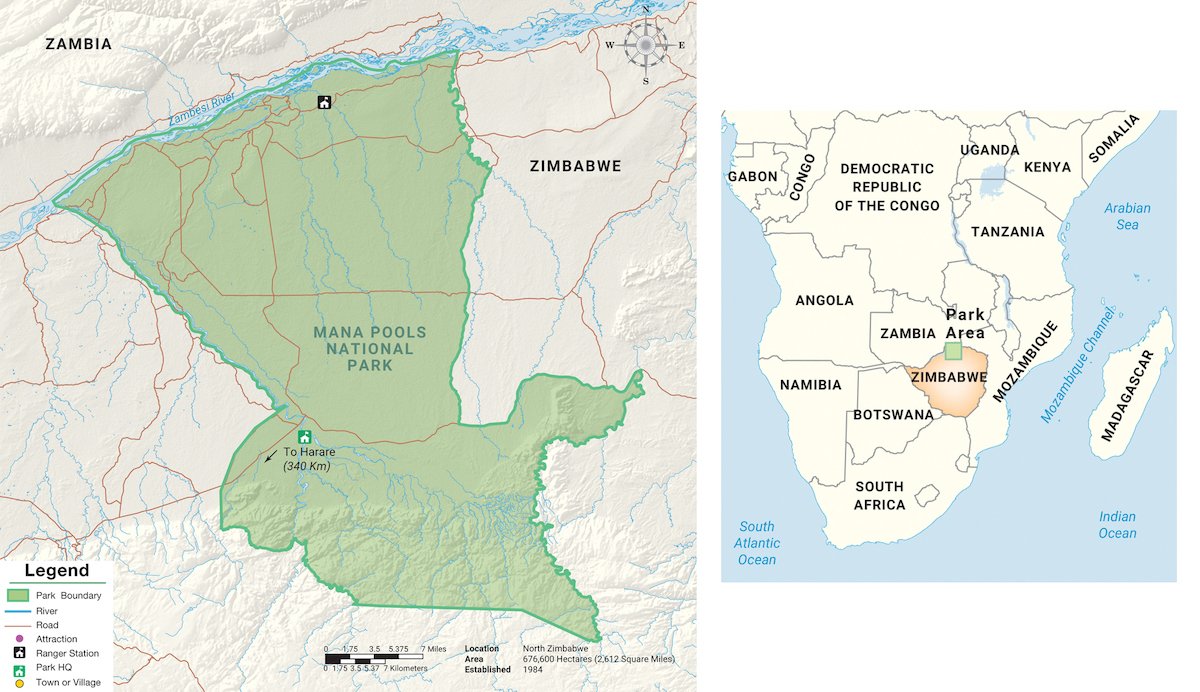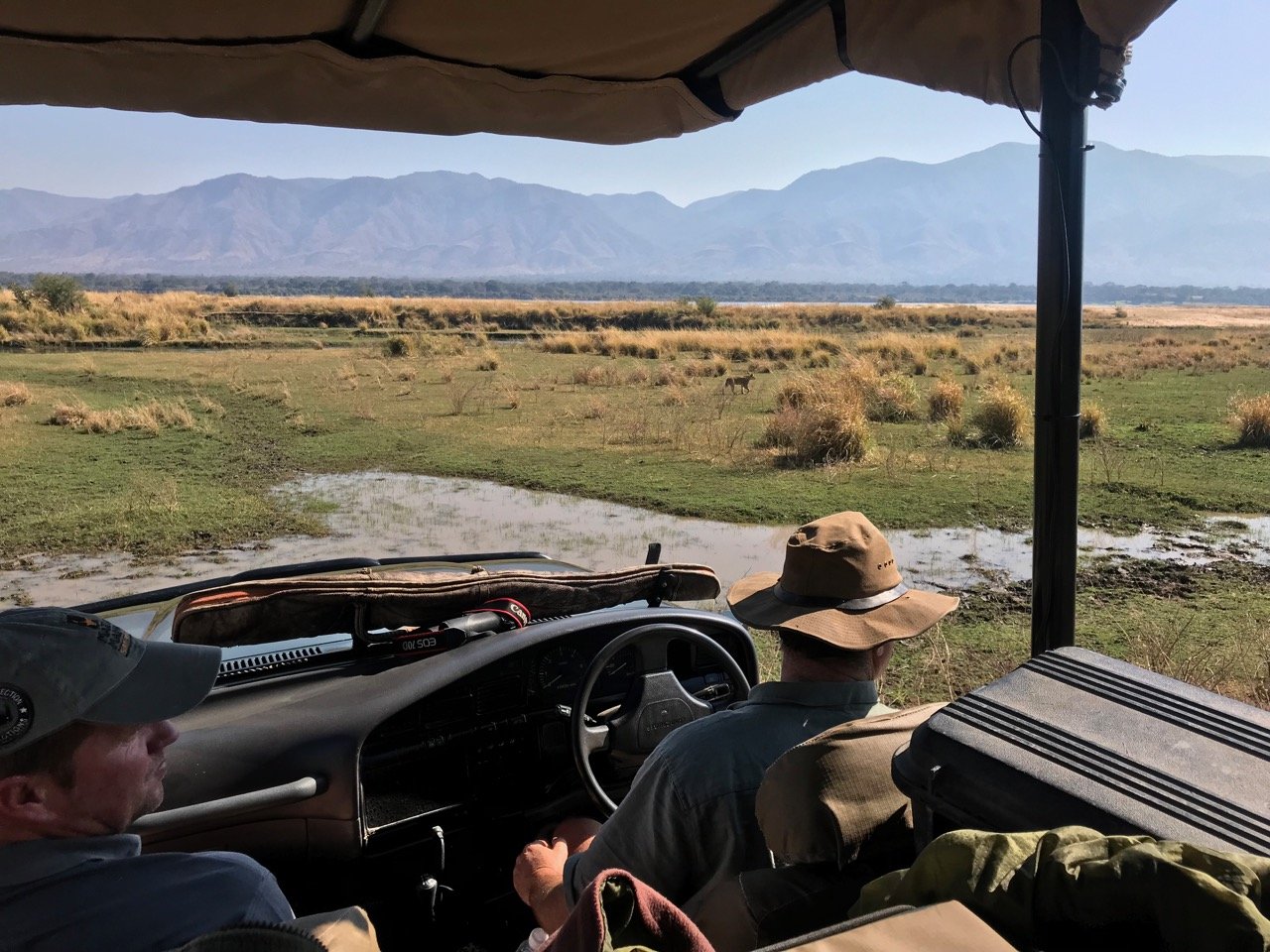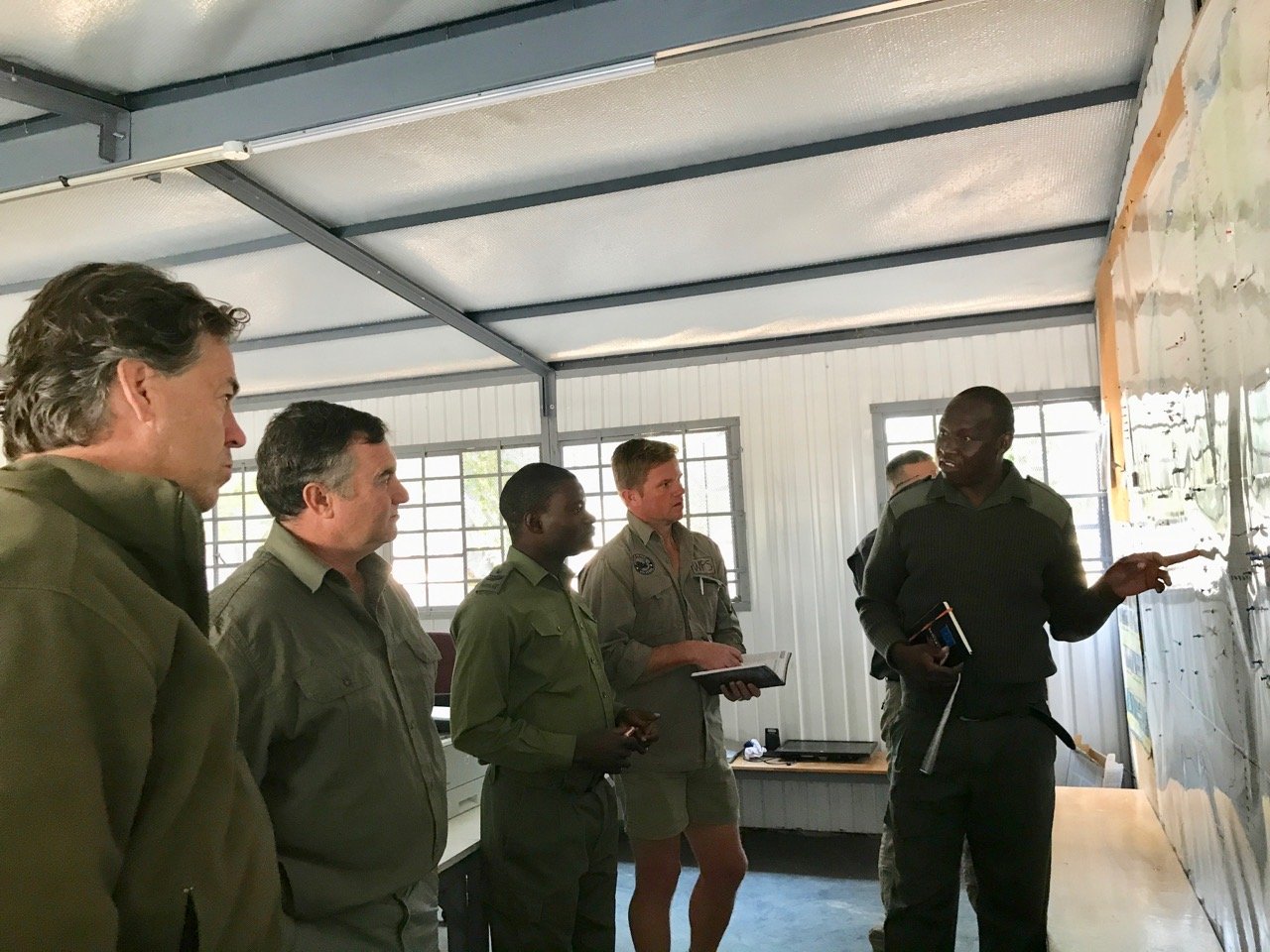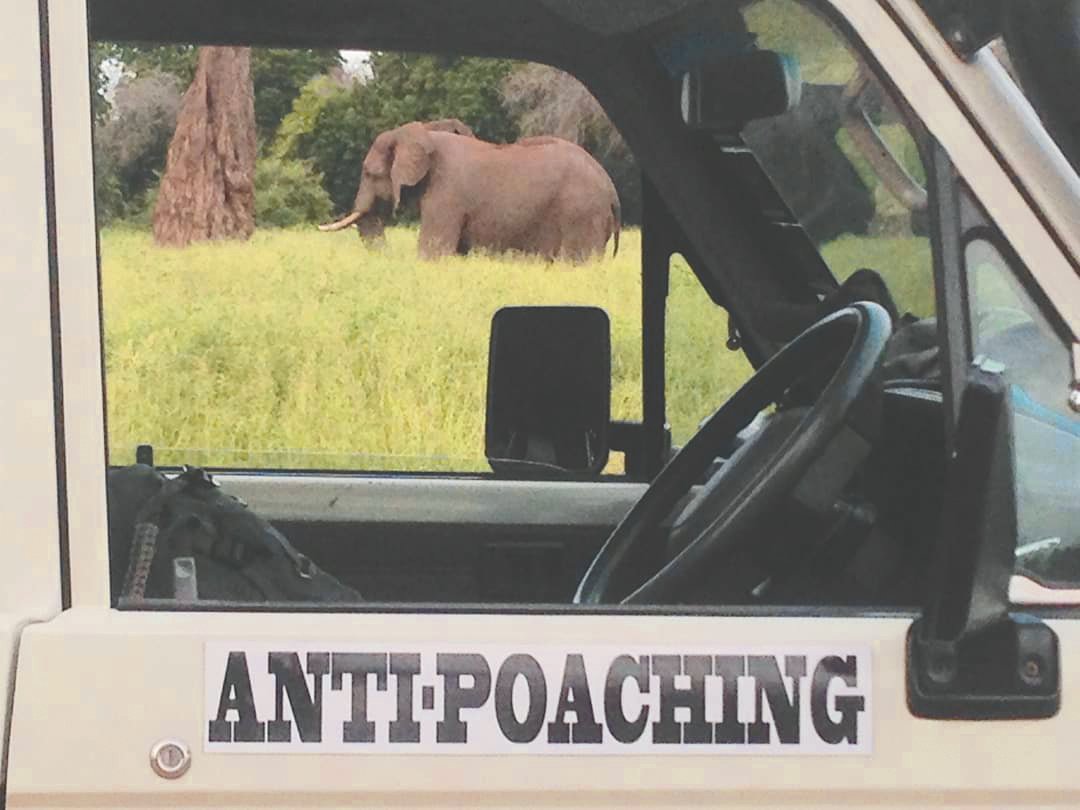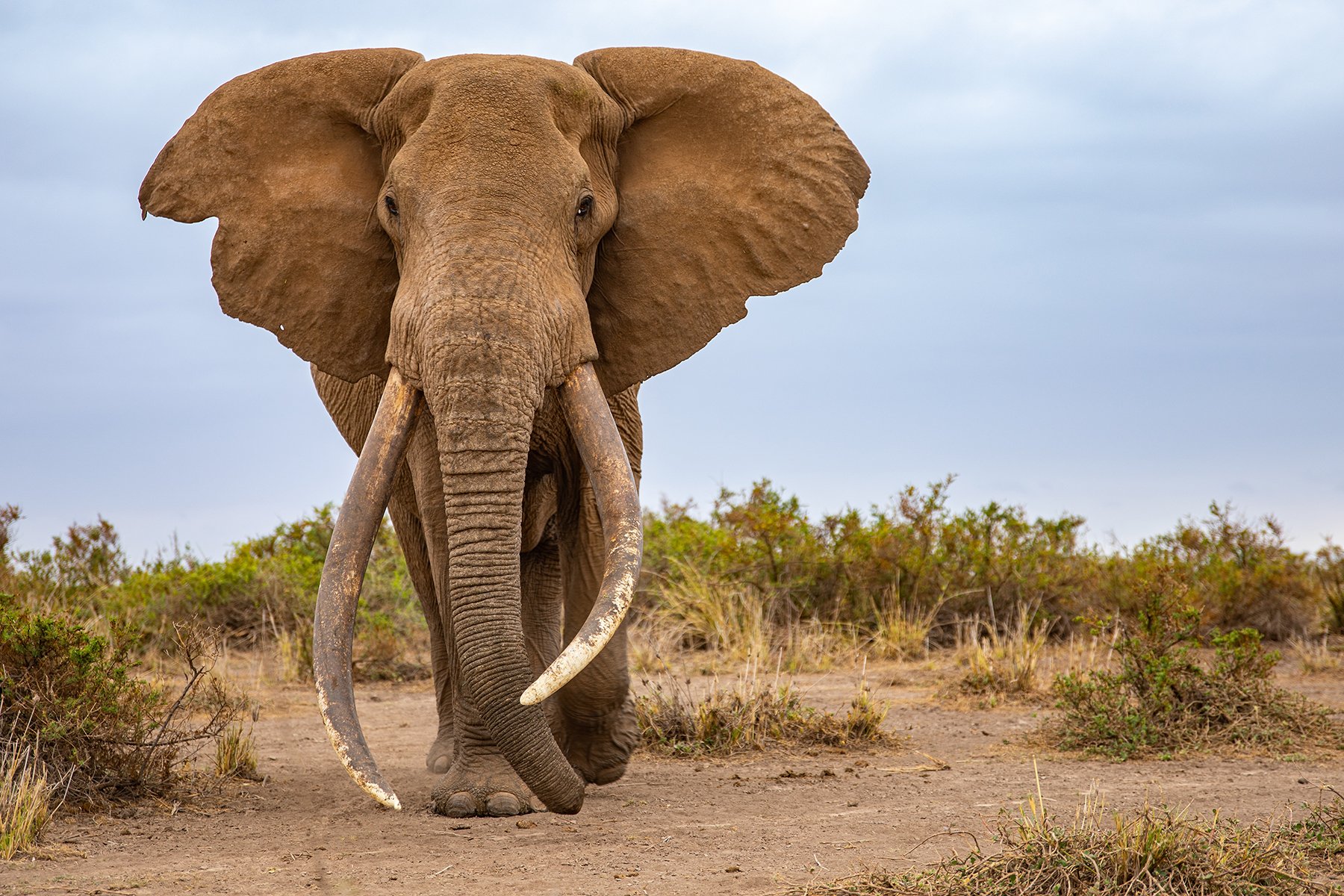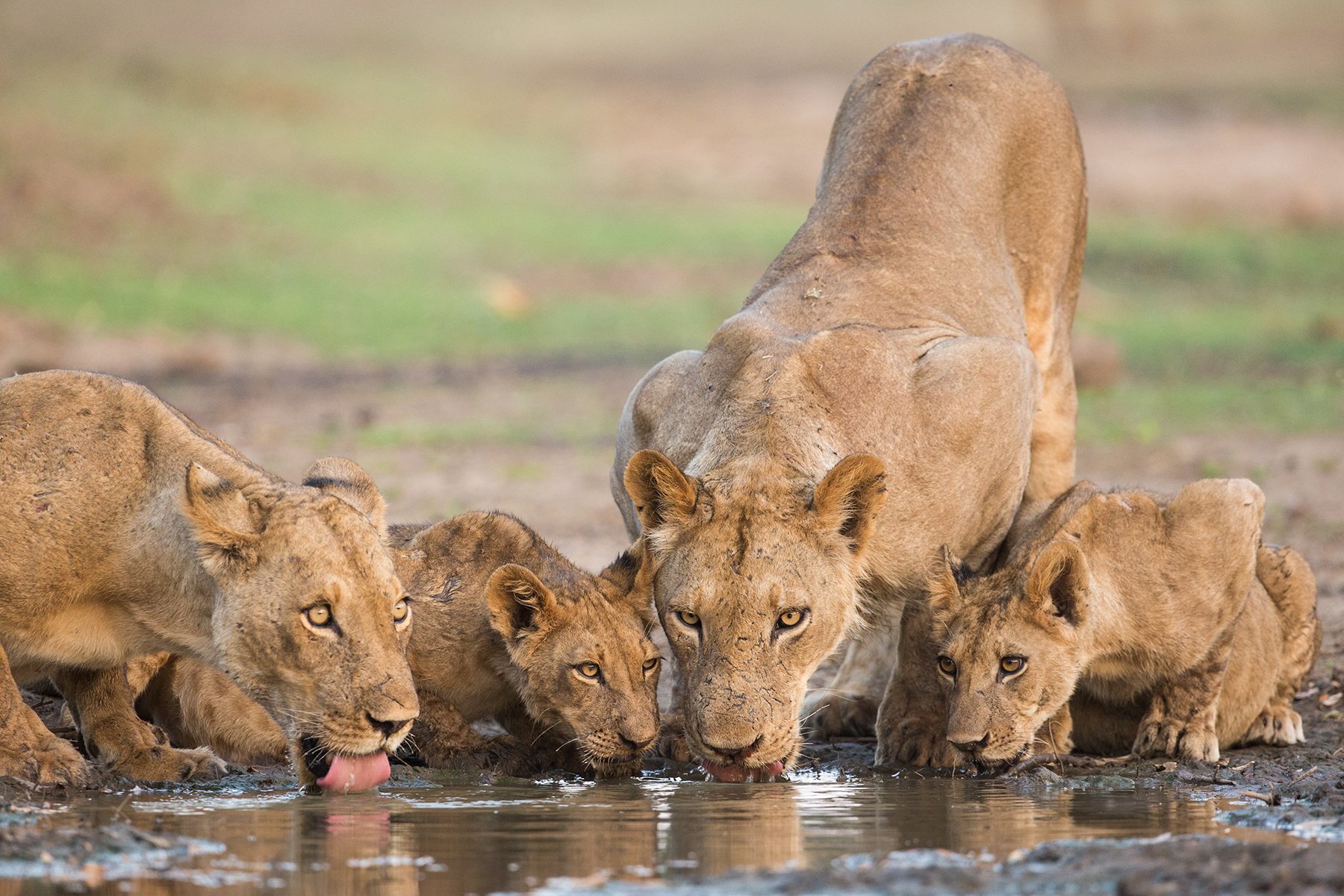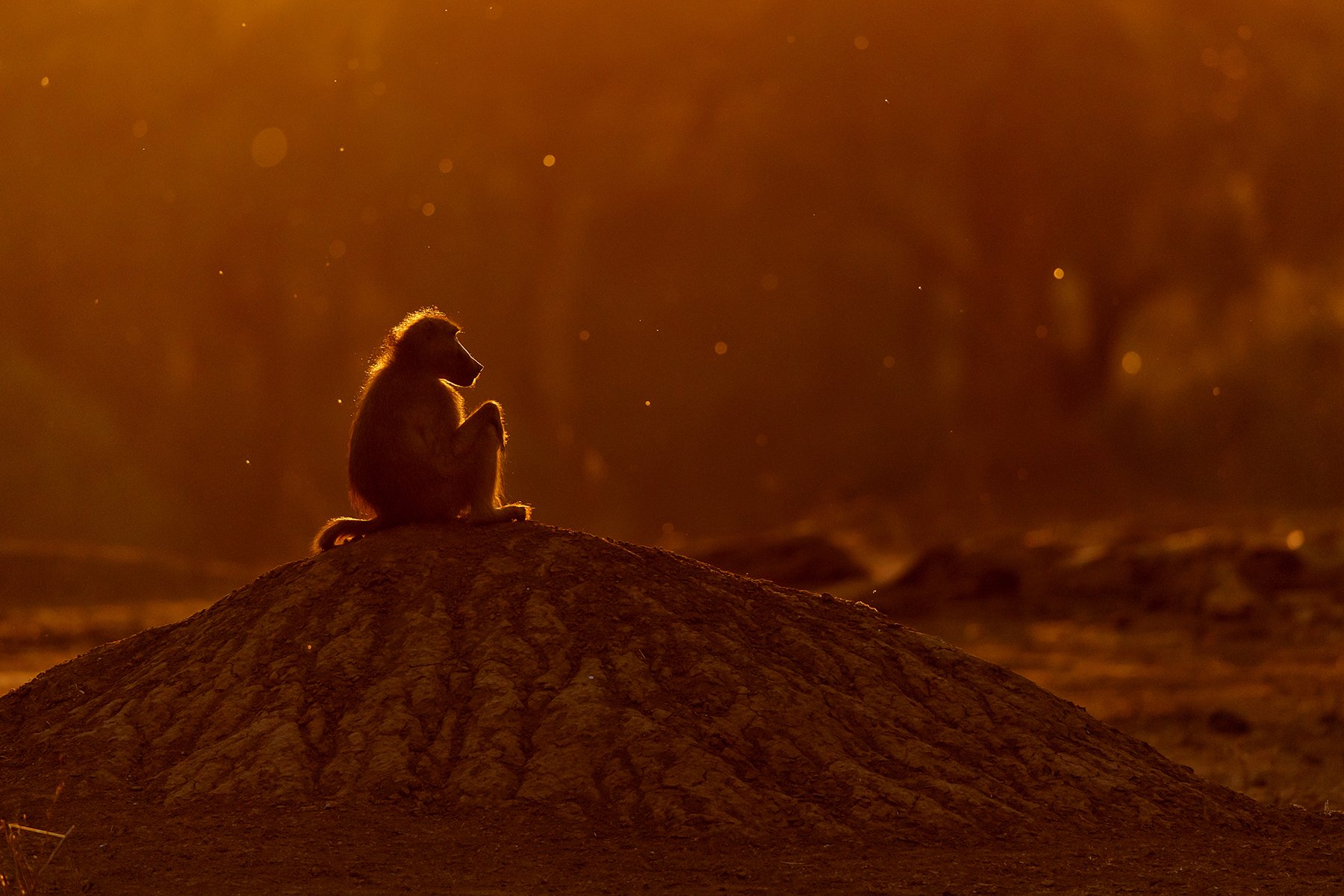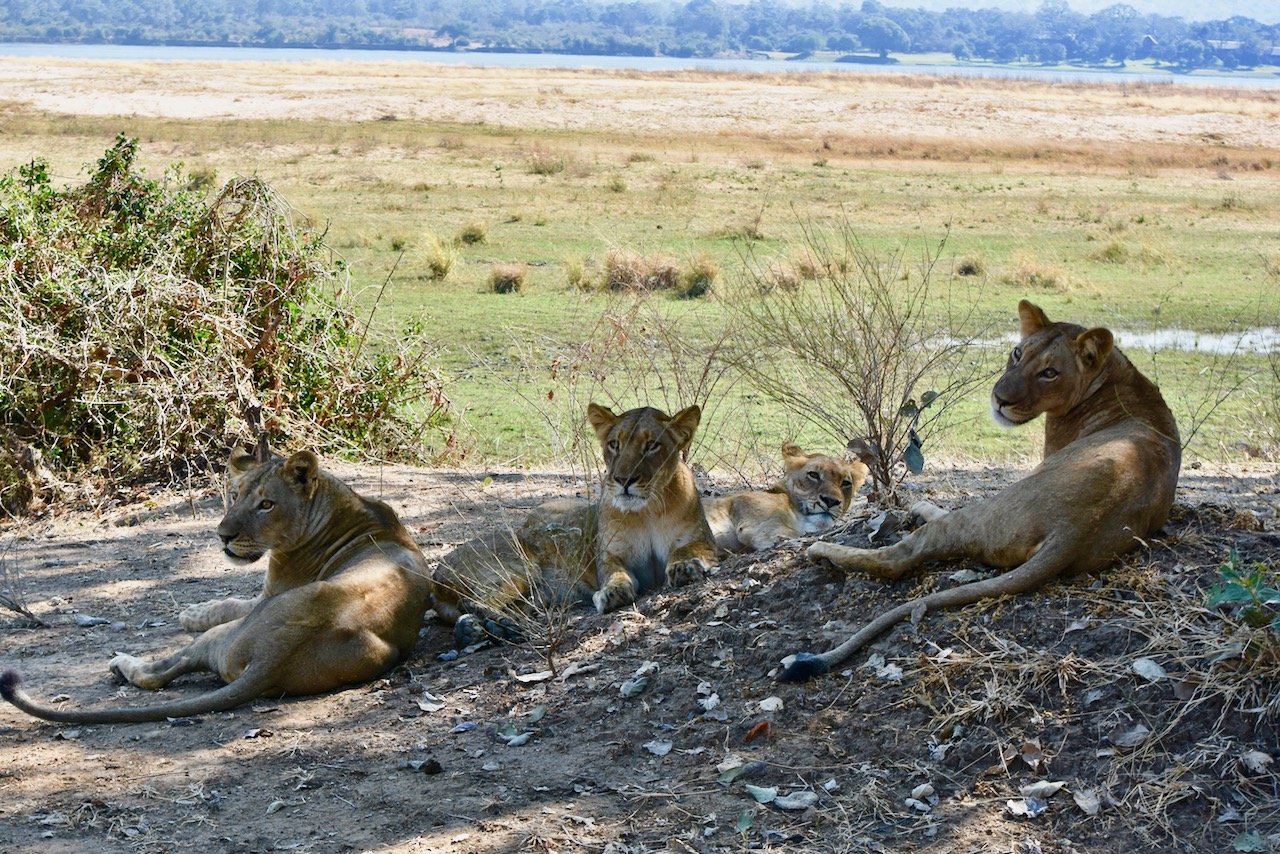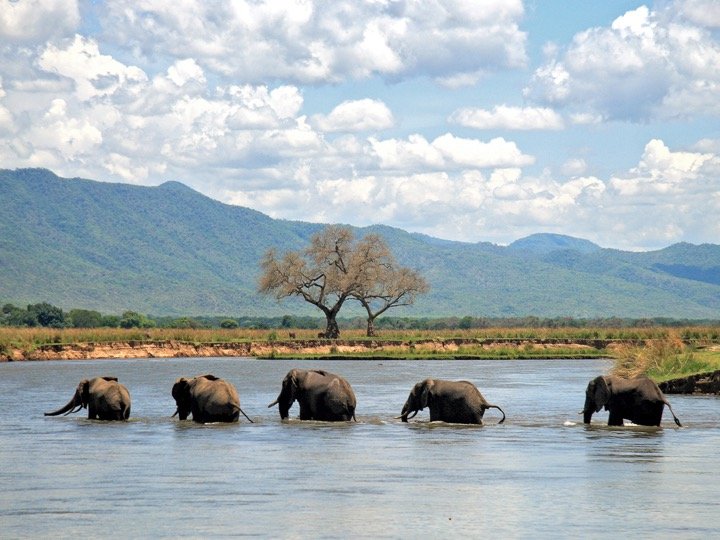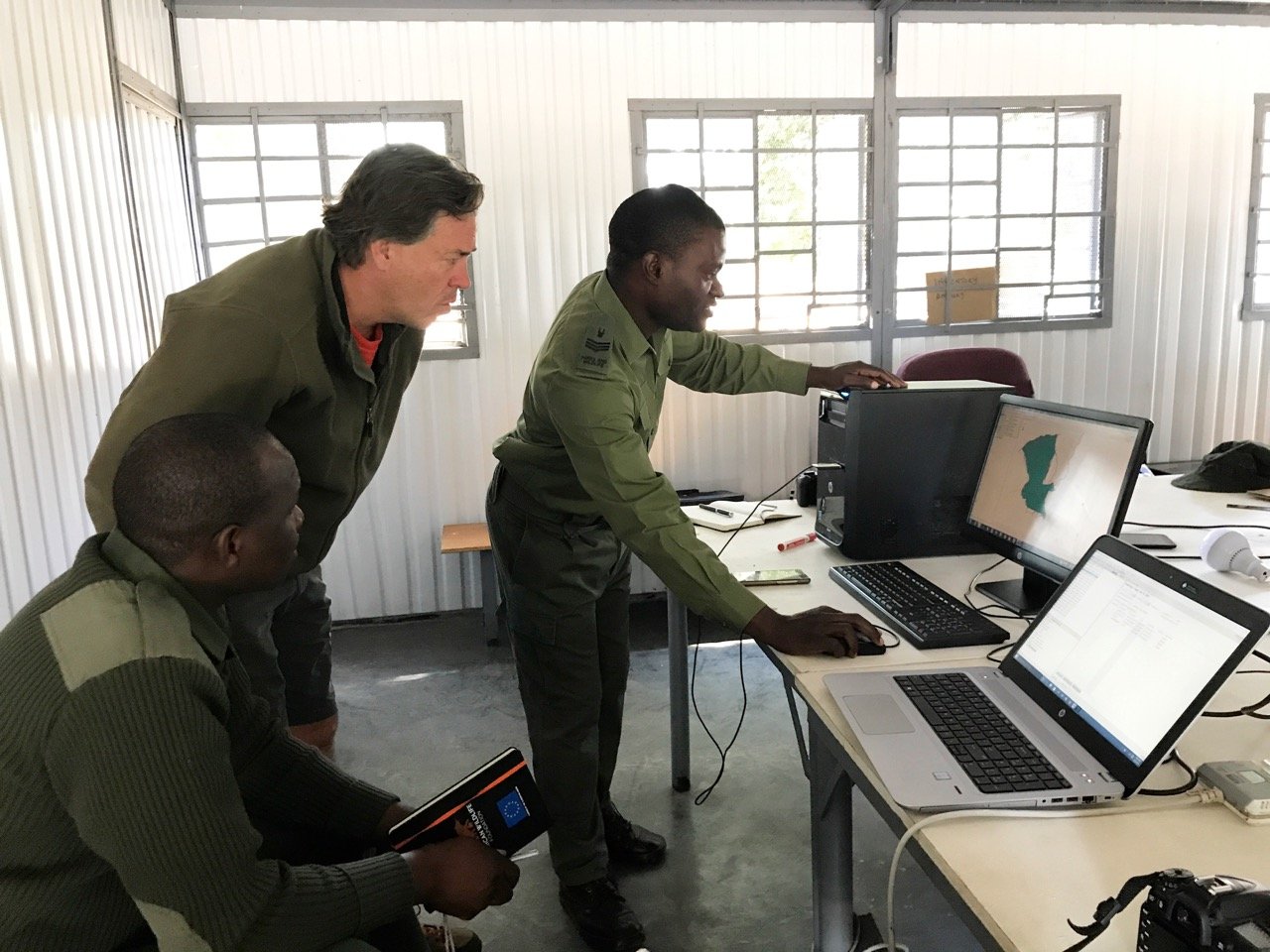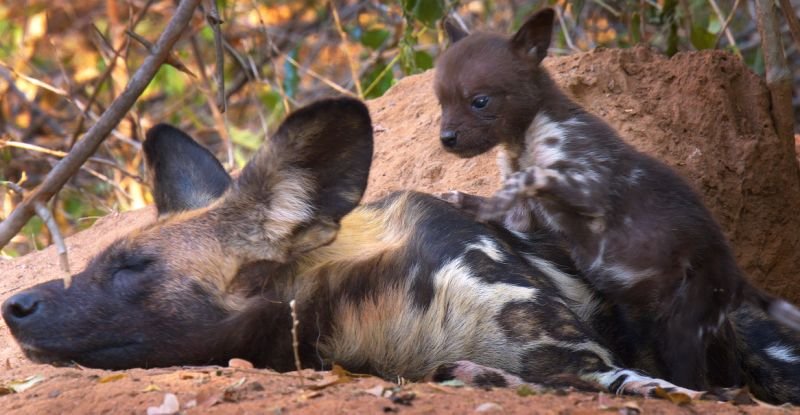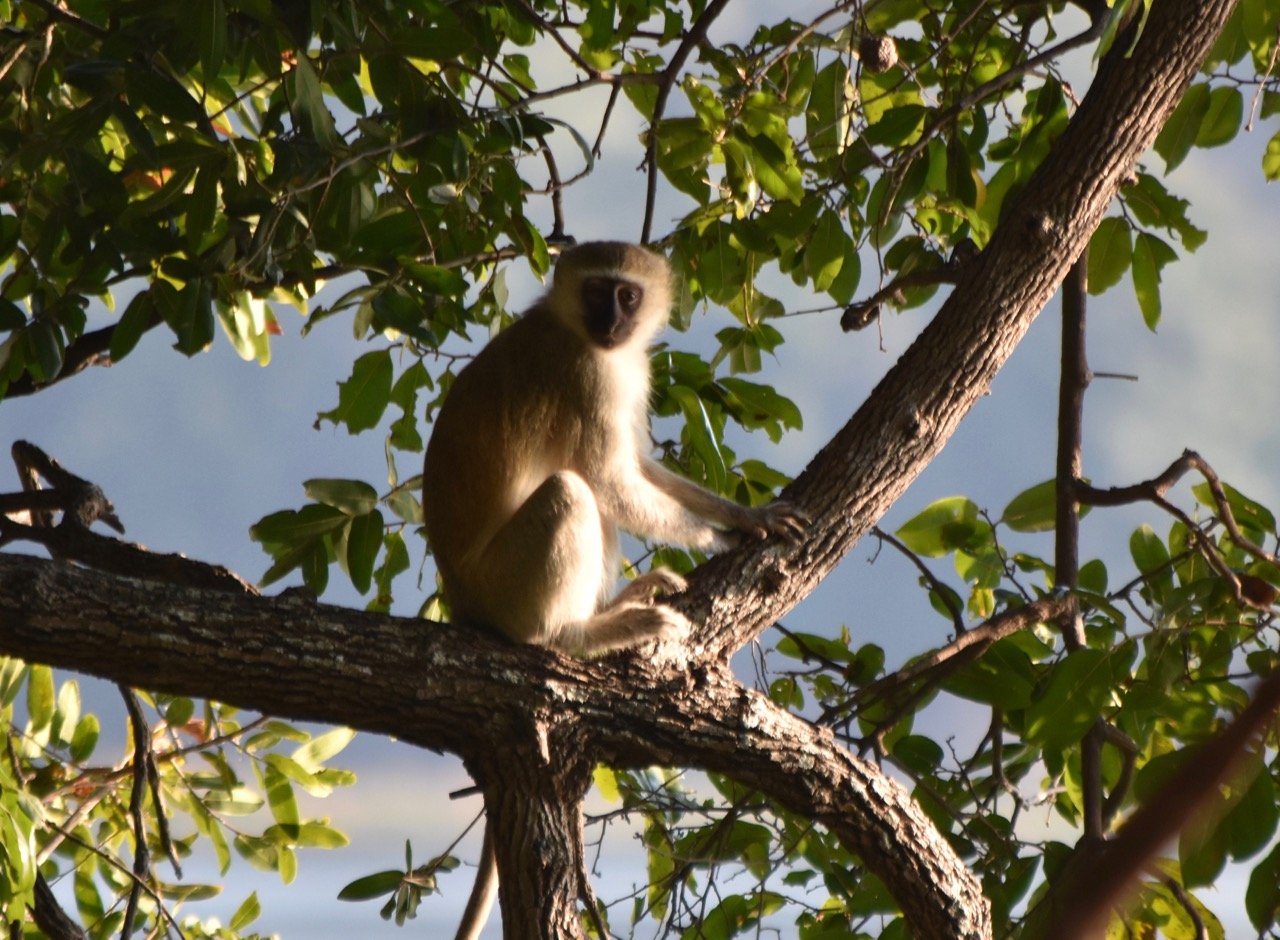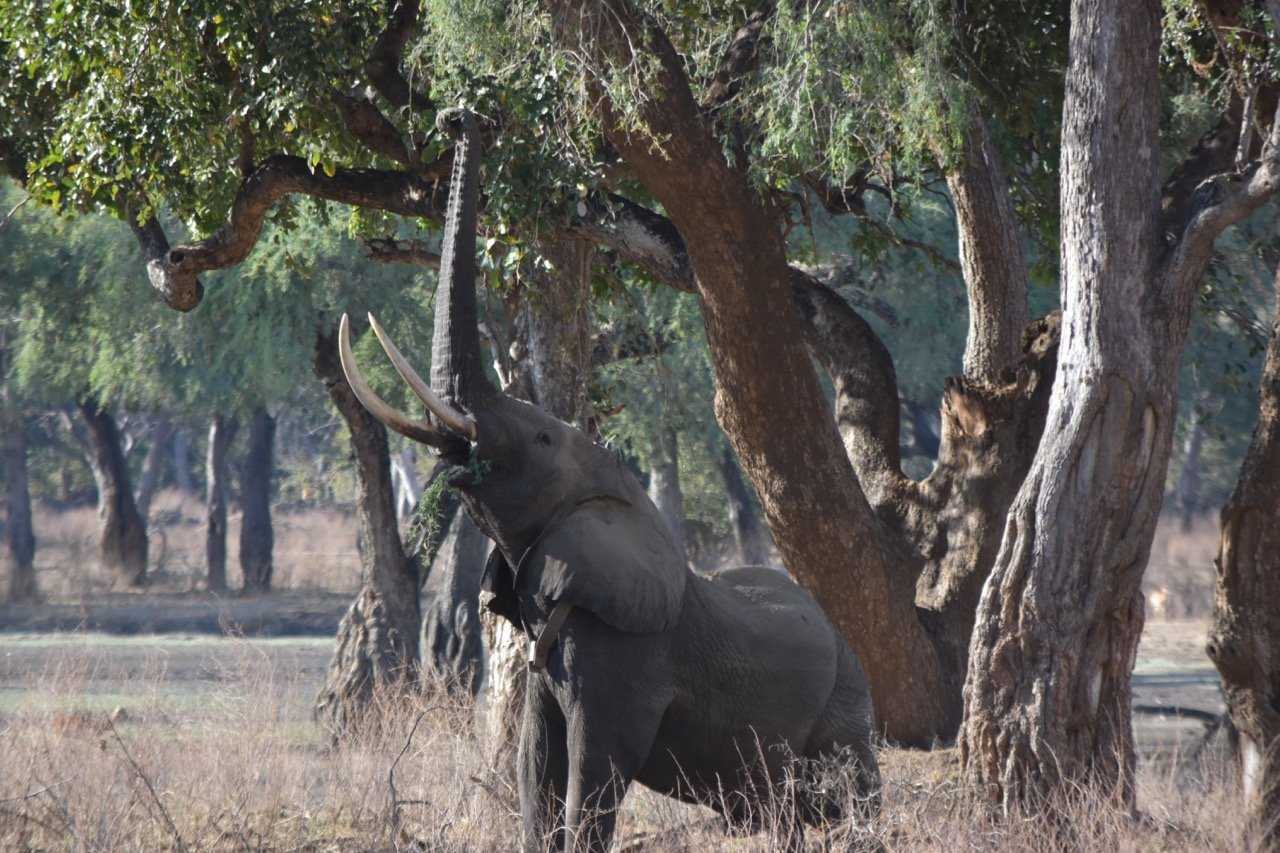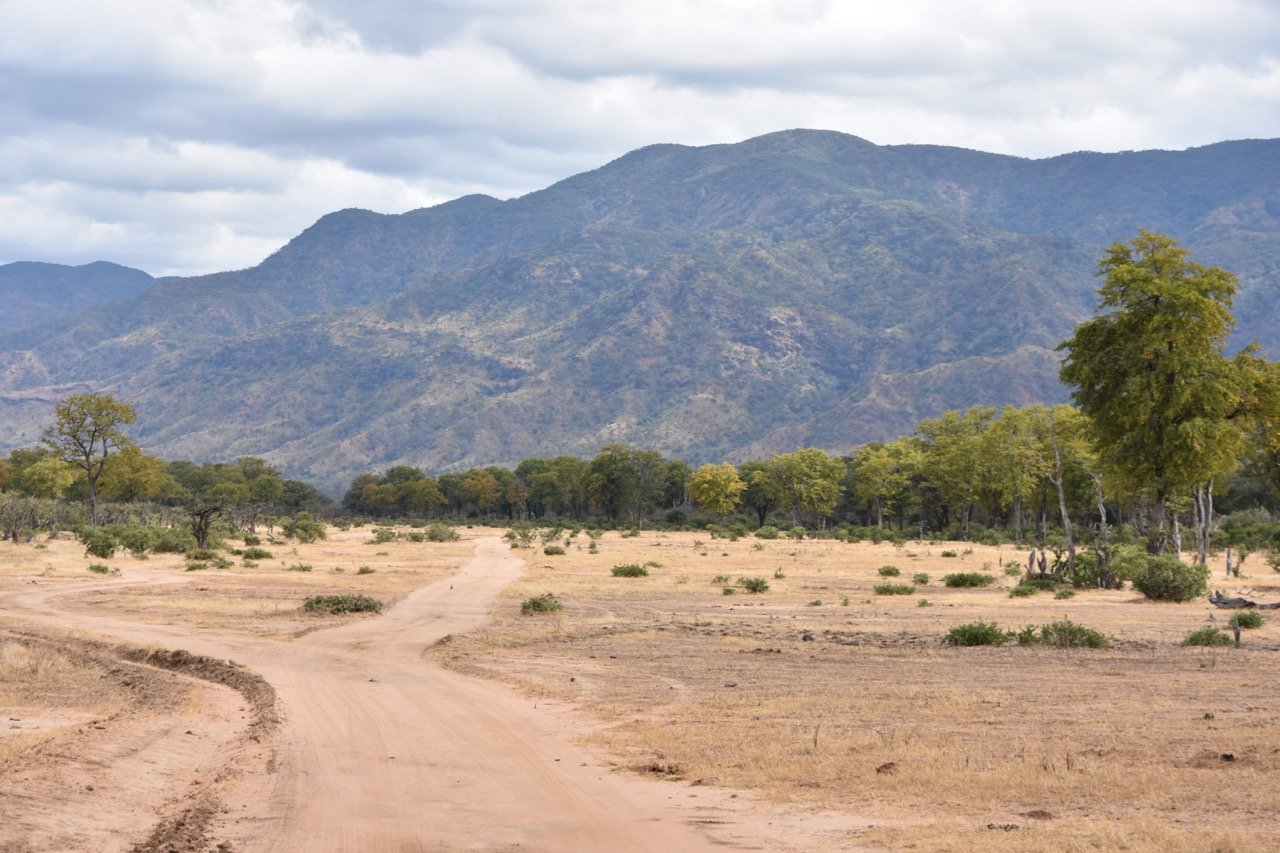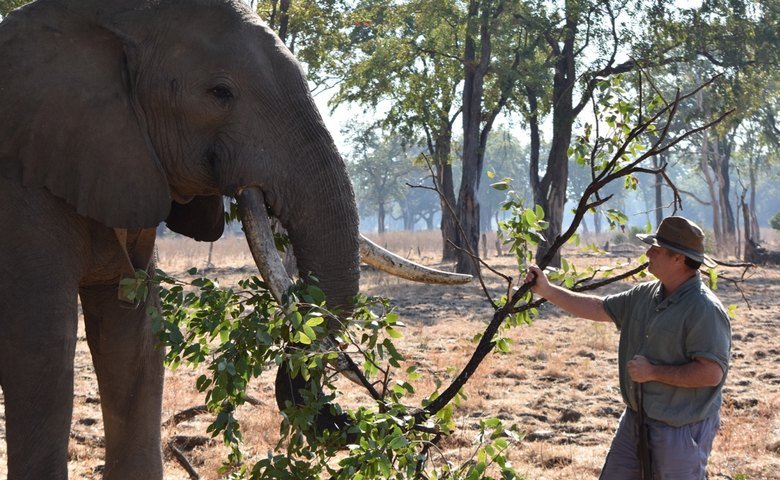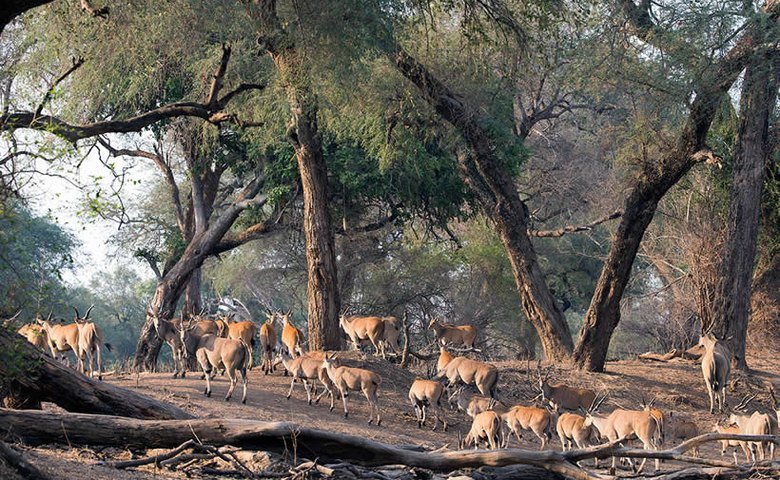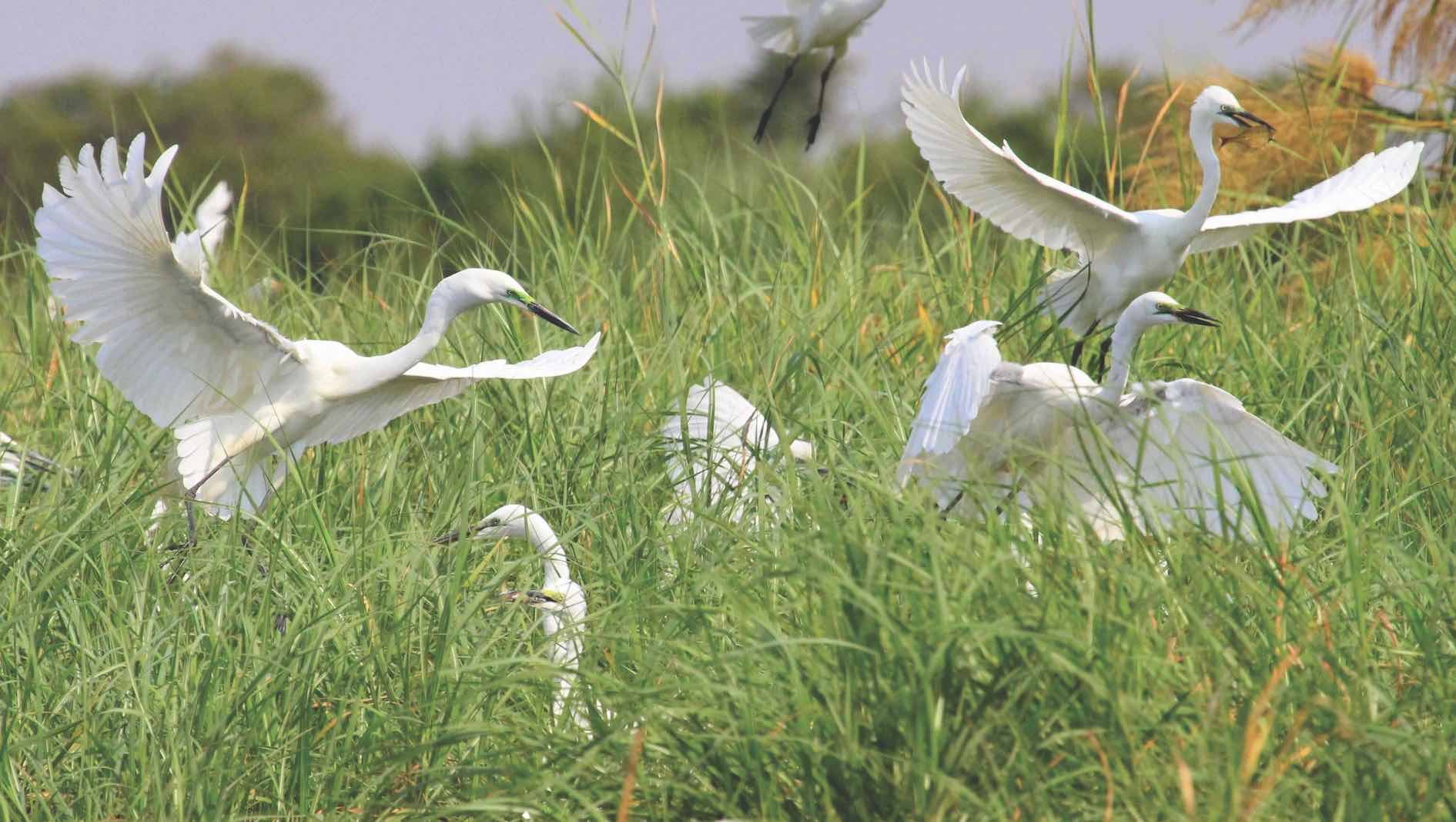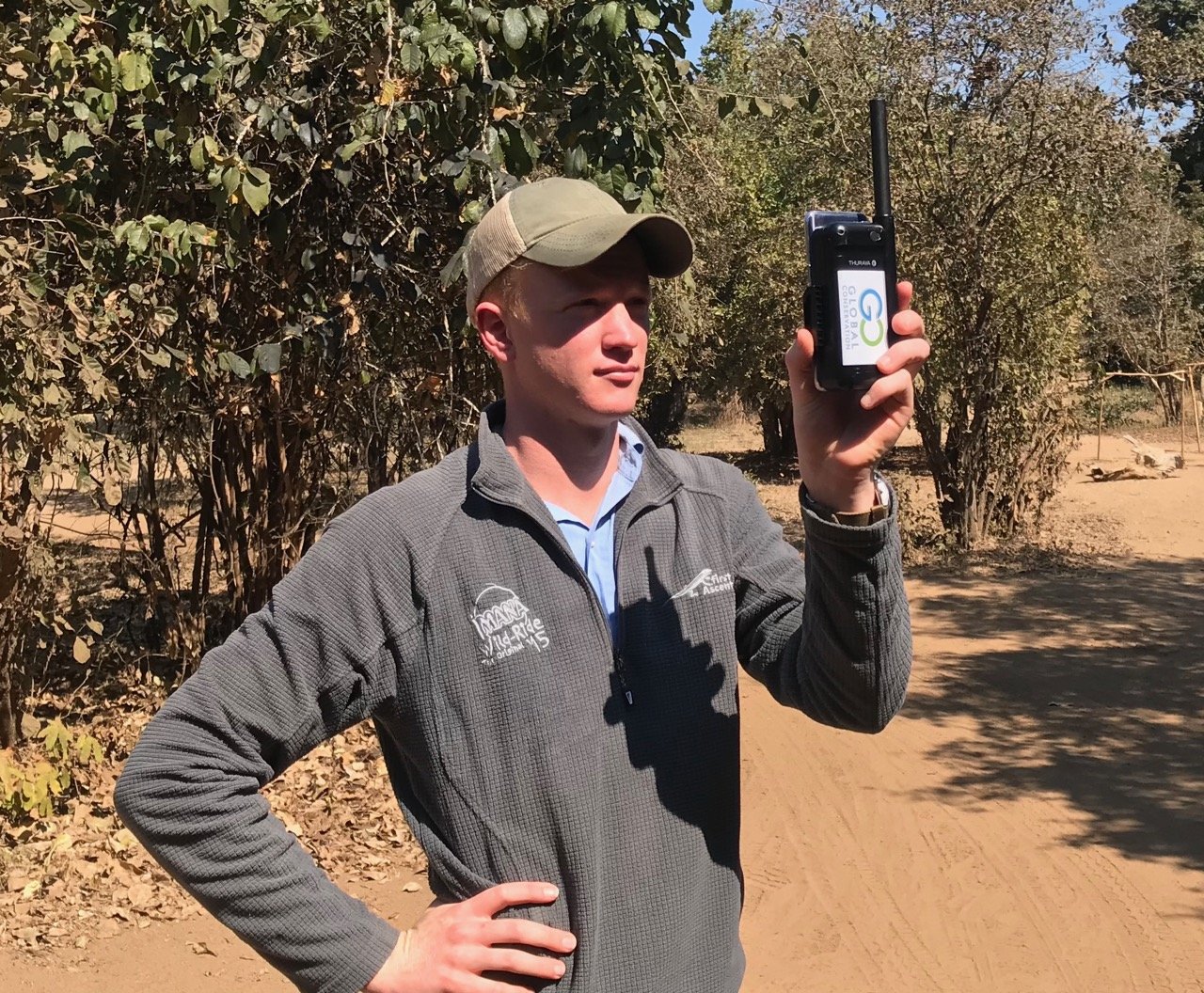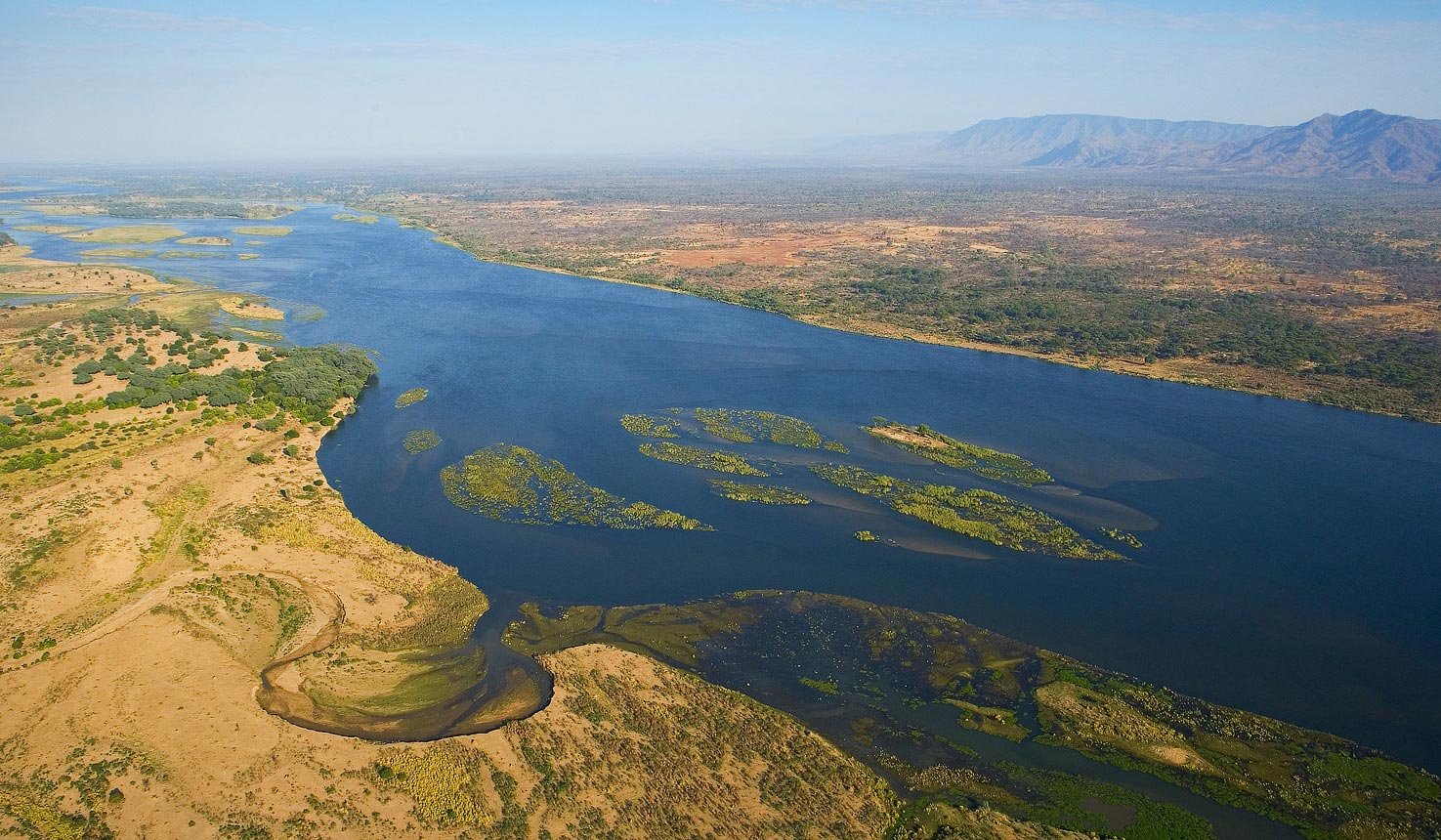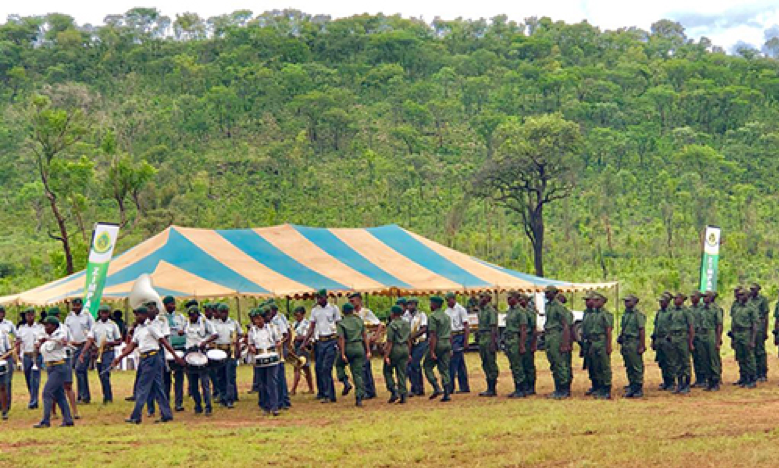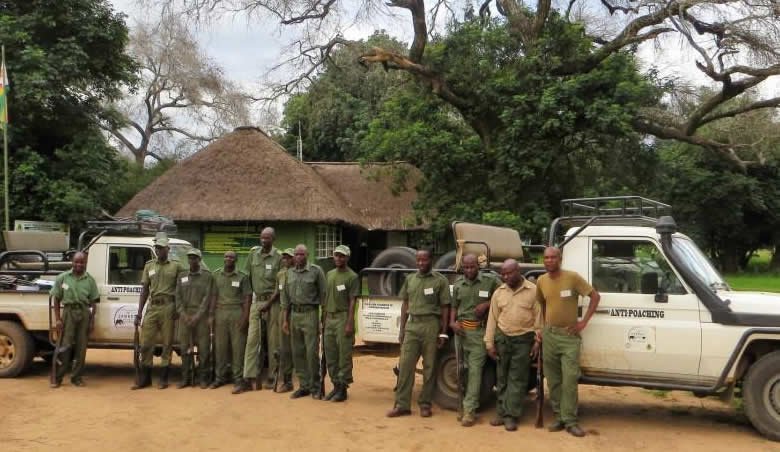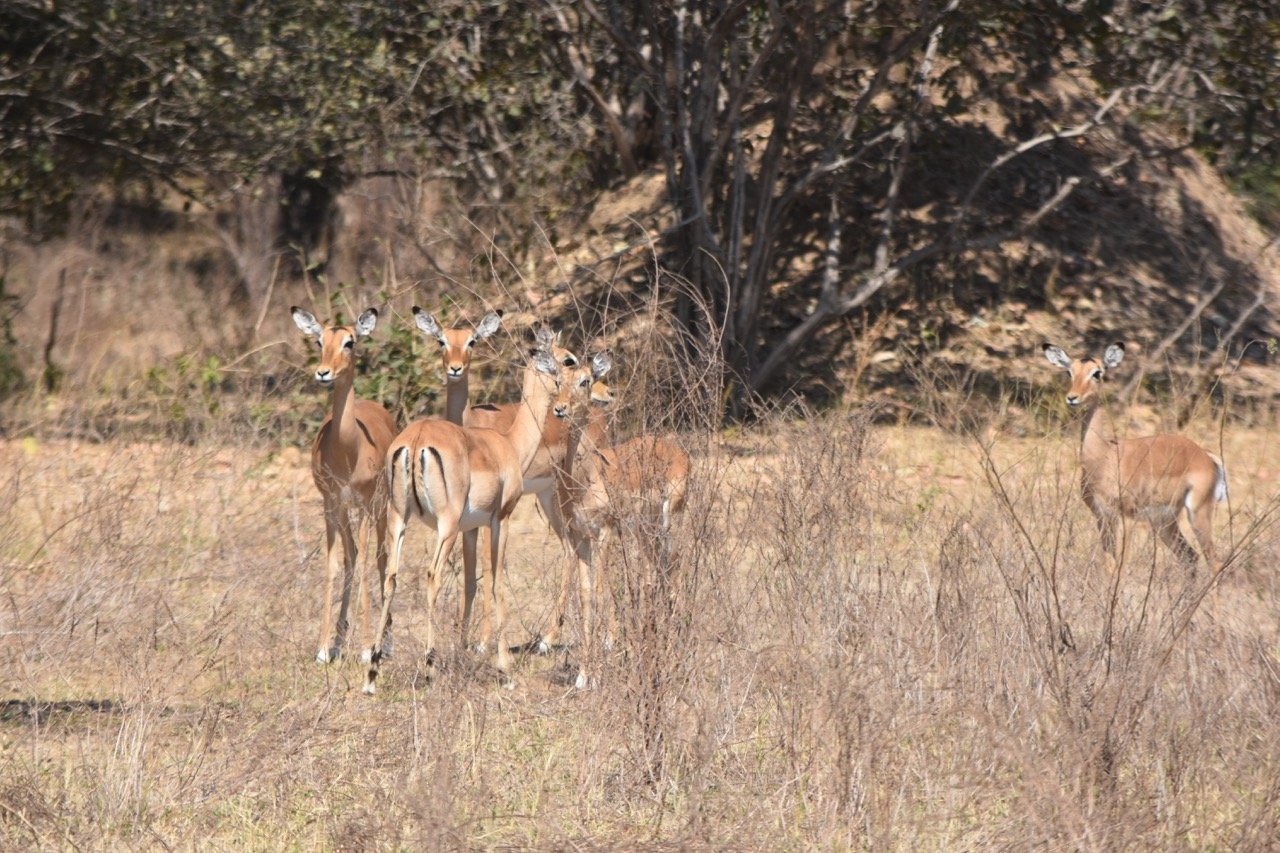Mana Pools World Heritage Site, Zimbabwe
OVERVIEW
The 220,000-hectare Mana Pools National Park, a UNESCO World Heritage Site, lies in the Lower Zambezi Valley of Zimbabwe, part of a vast unfenced wilderness of over a million hectares where wildlife roams free. To the north flows the mighty Zambezi River, flanked by mahogany, wild figs, and baobabs; to the south, an escarpment rises more than 1,000 meters from the valley floor.
SIZE
220,000 Hectares
GOAL
$1,200,000
VISITORS BY 2025
80,000
Introduction
Dusk in Mana Pools is like a watercolor shroud. As the sun sets into purple, blue, and gold, the warble of a fish eagle gives way to the piping call of a fiery-necked nightjar, the whoop of a hyena, and the eerily childlike cry of a bush baby. The luckiest visitors might even hear the gentle clack-clack of a pangolin ambling past their tent, scales clicking together as they clutch their sickle-clawed forepaws to their chest like a tiny T-rex. Indeed, with their tough armor, these curious mammals might be mistaken for a reptile.
Visitors here are treated to sights that seem impossible anywhere else.
The winter-thorn trees gather the blue light of dawn, imbuing the banks of the Zambezi River with a periwinkle hue like a storybook forest. In this real-life fairy tale, elephants balance on their hind feet, stretching their prehensile trunks to pluck the last dry-season leaves from these massive trees. Painted dogs, one of the most endangered mammals in Africa, bolt across the plains to hunt arboreal baboons, which they do nowhere else. With their mottled tricolored coats, unique as fingerprints, they weave in and out of the grass, kicking up scattered earth that rises and catches the blue light like fairy dust.
Natural Heritage
Here, the floodplain of the Lower Zambezi River turns into a broad expanse of water after each rainy season. As the flood recedes, myriad wildlife arrives in search of water, making it one of Africa's most renowned game-viewing regions. This is the last national park in Africa where visitors can still walk unescorted among big game. Approximately 7,000 tourists visit Mana Pools World Heritage Park and the Lower Zambezi Valley each year, generating over $2 million in revenues.
Mana Pools has the country’s biggest concentration of hippos and crocodiles, and large dry-season populations of zebra, elephants, and buffalo. The area is also home to other threatened species, including lions, cheetahs, wild dogs, and near-threatened species like leopards and brown hyenas.
Over 400 bird species occur here, as well as all of the large animal species found in Zimbabwe except giraffe, wildebeest and the endangered black rhino.
Introducing Endangered Species to Mana Pools
In 1984, 500 endangered black rhinoceros lived here in Mana Pools, which was one of the most important refuges for rhinos on the continent. In 1994, just ten rhinos remained, and Mana Pools National Park made the wise decision to move these last individuals elsewhere for their own protection, effectively saving the local species. Today, rhino re-introduction and conservation, as well as for other keystone species such as elephants, are active and ongoing.
Mana Pools National Park has become a final stronghold for wildlife. Mana Pools has suffered fewer losses compared to surrounding reserves due to its position at the center of this wilderness area, but its defenses are being strengthened in order to ensure its continued survival as wildlife numbers dwindle elsewhere.
Saving Mana Pools
Mana Pools National Park has become a final stronghold for wildlife. Mana Pools has suffered fewer losses compared to surrounding reserves due to its position at the center of this wilderness area, but its defenses are being strengthened in order to ensure its continued survival as wildlife numbers dwindle elsewhere. Rangers are tasked with patrolling this vast wilderness and are now supported by Global Conservation's Global Park Defense Program.
Global Conservation began deploying Global Park Defense systems in Mana Pools in 2017, including a Cellular Trailcam Network, Long-range Thermal Cameras, a Vulcan Domain Awareness System, ranger communications via satellite networks, and PROTECT Ranger training. We also support anti-poaching patrols overseen by our partners, Bushlife and the Zambezi Society, by providing funding for vehicles, fuel, and maintenance.
To date, Global Conservation support has helped enable Bushlife to deploy rangers on anti-poaching activities in the Mana Pools, Sapi, Nykasanga, Rifa and Marongora areas, funding ranger patrol rations, fuel and vehicle maintenance.
Global Conservation has also provided a Thuraya Satellite Network to enable six ranger teams to be in constant communication using Galaxy S8 smartphones anywhere in the park. These smartphones can also support the SMART Patrolling system for data collection on anti-poaching patrols and biodiversity monitoring.
In the coming years, we will be supporting initiatives to expand protected areas in the Lower Zambezi Valley two or threefold. We are dedicated to preserving this storybook African ecosystem so that future generations can continue to listen to the clack of a pangolin, the whoop of a hyena, and the piping call of a fiery-necked nightjar.
Species Facing Extinction
In Mana Pools National Park, we are working with our partners to protect the African savannah elephant, especially super tuskers.
Global Conservation is funding a multi-year Species Population Baseline study for African savannah elephants to ascertain progress in park and wildlife protection from our investments in Global Park Defense in Mana Pools National Park.
African Savannah Elephant (Super Tuskers)
African savanna elephants are the largest terrestrial mammals on Earth. Though they once roamed throughout sub-Saharan Africa, their range has become increasingly small due to poaching and habitat loss. After rampant demand for their tusks, just 20 super tuskers remain.
Partners in Conservation
Bushlife Conservancy is a Section 501(c)(3) registered charity in the United States. They are dedicated to the protection and conservation of wildlife and habitats in Africa, primarily in the Zambezi River Valley of Zimbabwe and Zambia. Bushlife Conservancy accomplishes this mission primarily by funding the work of Bushlife Support Unit Trust, a Zimbabwe nonprofit.
Bushlife Support Unit Trust coordinates the activities of a group of trackers and rangers who tirelessly patrol the Zambezi River Valley and surrounding areas in the search of poachers, snares, and other hazards to wildlife on both land and river. BSUT’s hard work has paid off over the years, saving the lives of hundreds of wild animals.
The Zambezi Society is a private, voluntary conservation group driven by a passionate team working closely with local and international organizations, government authorities, and local communities.
The society is committed to initiating rapid, well-informed, and effective action to:
Maintain the Zambezi Valley’s biodiversity
Conserve Zambezi wildernesses and promote the recognition of their values
Ensure that conservation is incorporated into planning for the whole Zambezi Valley landscape
Encourage people to find ways of using the natural resources of the Zambezi Valley without destroying them
Feature: BBC Earth "Dynasties" Series
BBC Earth's series "Dynasties" filmed an episode on painted wolves, or African wild dogs, in Mana Pools National Park. Painted wolves are one of Africa's most endangered species. Only about 3,000-5,000 are left in the wild, and their numbers decrease each year due to threats like development and land use change, poaching, and human-wildlife conflict. Mana Pools ia a critical sanctuary for African wild dogs. To read more, click here. To see a video of a painted wolf collaring from the series, click here.
Mirador in the News
Botswana Unplugged - Wilderness Wildlife Trust supports translocated wild dogs in Mana Pools
IOL - Why Zimbabwe continues to enchant tourists
Wall Street Journal - Why Zimbabwe Is a Safari Go-To Again
National Geographic - Recovery and renewal: the return of wildlife tourism in Zimbabwe
National Geographic - Why Zimbabwe’s female rangers are better at stopping poaching
Mining.com - Zambia scraps plans to build giant copper mine in national park
Fortune - Why Zimbabwe is Africa’s new must-visit safari destination
Stuff.co.nz - Zimbabwe, Mana Pools: A game park where guests can walk among the wildlife



